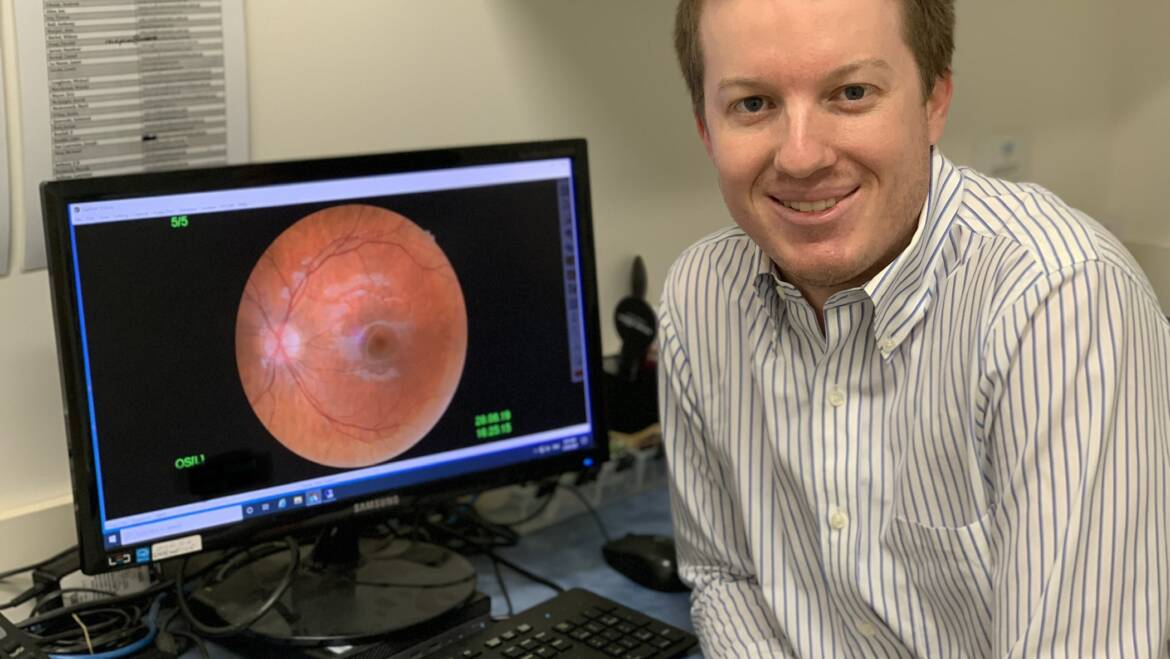Optometrist Angus Boyd-Law at Swan Hill Optical
National Diabetes Week is a timely reminder for Australians to more closely examine the impact of diabetes on different aspects of their health.
The team at Swan Hill and Kerang Optical are encouraging diabetics to find out more about the effect of this disease on their eye health, and what they can do to help protect their vision.
Diabetes is a condition where too little or no insulin is produced by the body, or is produced but ineffective, leading to high levels of blood glucose or sugar.
In Australia, one person is diagnosed with diabetes every five minutes.
Diabetes can affect many parts of the eye, and can contribute to the development of cataracts and glaucoma. Around 60 percent of Australians with type 2 diabetes will develop some form of eye disease within 20 years of diagnosis.
Patients may not have any signs or symptoms early in the disease, but can later go on to experience blurred or fluctuating vision, double vision, spots or floaters, and ultimately dark or empty patches in their sight.
High and uncontrolled levels of glucose in the blood can damage blood vessels. They become leaky and seep fluid, in particular in the light sensitive film at the back of the eye known as the retina. The accumulation of fluid can also lead to swelling at the macula, which if left untreated, can lead to severe vision loss.
The damage to the retina is called diabetic retinophathy, which is the leading cause of blindness in working age Australians. Risk factors for developing diabetic retinopathy include smoking, high blood pressure and cholesterol, as well as a poor diet.
The risk also increases the longer the patient has had diabetes, and if blood sugar levels are not well controlled. It is therefore imperative for diabetics to not only keep sugar levels within their target range, but to also minimise fluctuations. We check the health of a patient’s eyes as part of a routine examination. When checking for diabetic retinopathy, we put drops in that enlarge the pupil so that a wide field of view of the retina is achieved.
For over 15 years, we have been taking retinal photos, which allows for direct comparison to a patient’s last examination, assisting in grading the level of diabetic retinopathy and looking for any new signs of damage to the retina. In early stages, diabetic retinopathy can be monitored.
A report is then sent to the patient’s GP and diabetic educator, who may alter existing medication and suggest changes in lifestyle habits. When damage is more severe, we refer to an ophthalmologist for treatment and management.
Early detection and treatment helps reduce the risk of future permanent vision loss, and we like to review diabetics every 12 months. You only get one set of eyes – protect them.
For more information contact the team at Swan Hill and Kerang Optical, or go to www.goodvisionforlife.com.au

